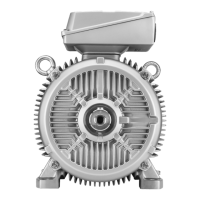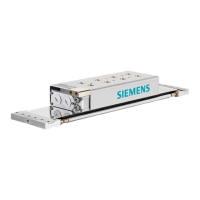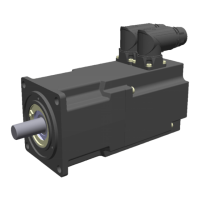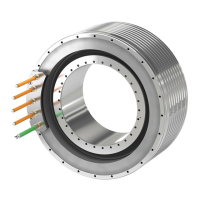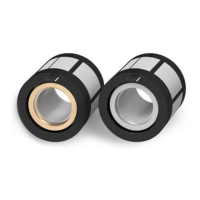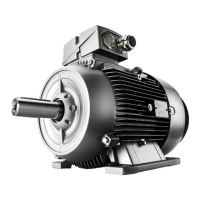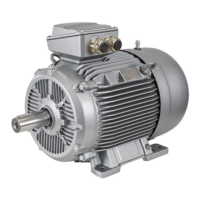Procedure
The machine axis must be horizontal when it is lifted and the flange must be parallel to the
mating flange, so as to avoid seizing and stressing. Otherwise damage to the centering will
result.
1. Grease the centering flange with assembly paste to make the process easier.
2. Screw three studs into tapped holes spaced about 120° apart around the driven machine
flange. The studs act as positioning aids.
3. Position the machine so that its axis is aligned with that of the driven machine, but not yet
quite touching. Advance the machine slowly towards the driven machine; advancing too
quickly risks damaging the centering.
4. If necessary, rotate the machine into the right position so that the clearance holes in the
flange are central to the tapped holes.
5. Move the machine fully up against the mating flange so that it is fully in contact.
6. Fix the machine using the flange fixing bolts, finishing by replacing the studs.
See also
Technical data and drawings (Page 119)
5.3.7 Mounting the machine
Secure mounting of different motor variants
● For secure motor mounting, use fastening screws with the required property class per ISO
898-1, e.g. 10.9.
● On motors with an upwardly oriented shaft extension, make sure that no water enters the
top bearing.
● Machines that are attached to the wall by their mounting feet because of their type must
be supported from below by a wall strip, for example, or pinned.
● Install motors with a belt output on clamping bars. This provides a simple way of ensuring
the correct belt tension.
Alignment accuracy
The coaxial characteristic of the shafts of electrical machines and driven machine may not
exceed 0.05 mm in diameter.
5.3.8 Axial and radial forces
You can obtain the permissible values for axial and radial forces by contacting the Siemens
Service Center (Page 117) or referring to the machine catalog.
Assembling
5.3 Installing the machine
SIMOTICS DC 1GG5
48 Operating Instructions 02/2016
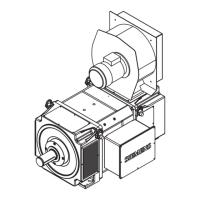
